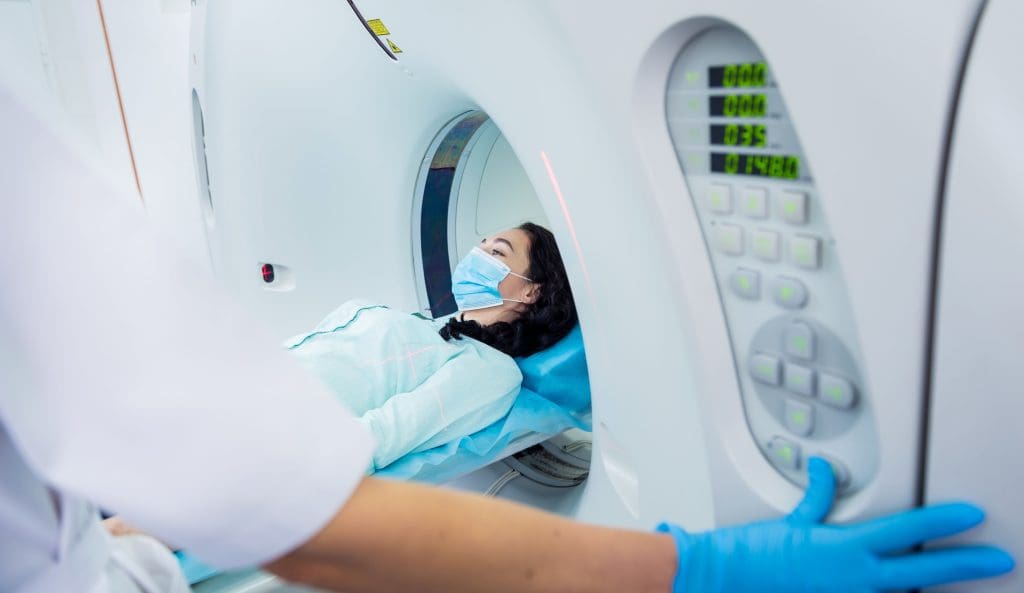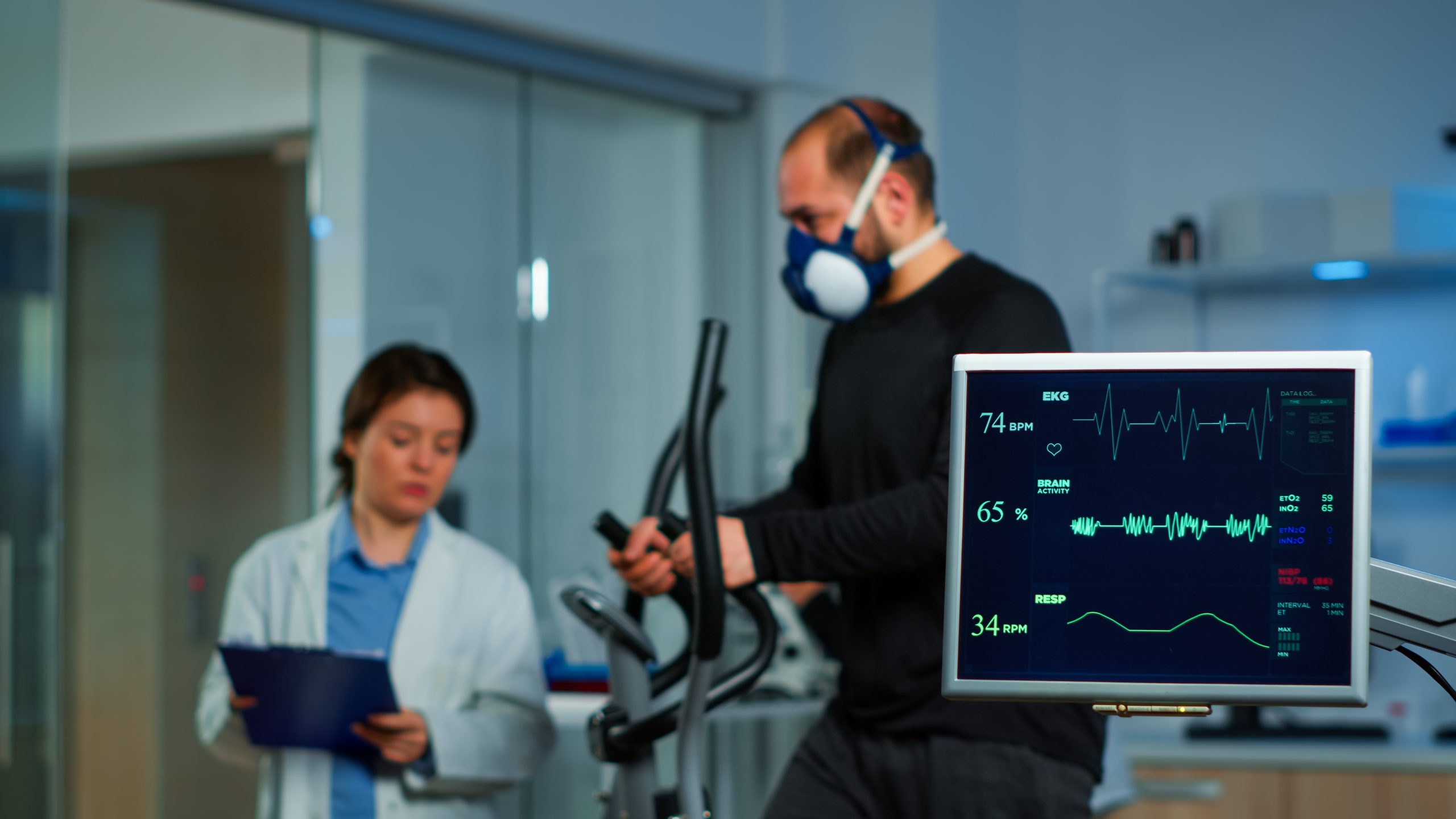Last Updated on November 27, 2025 by Bilal Hasdemir
After a Positron Emission Tomography (PET) scan, patients should stay away from others. This is because the radioactive tracer used in the scan emits radiation for a while.
The PET scan is a key tool for finding health issues like cancer and brain problems. But, it’s important to think about radiation safety after the scan. Knowing how radiation affects others, like kids and pregnant women, is vital.
Key Takeaways
- Limiting contact with others after a PET scan is advised due to the radioactive tracer used.
- The PET scan is a diagnostic tool that uses a small amount of radioactive material.
- Radiation safety is a concern post-PET scan to minimize exposure to others.
- Precautions are especially important for vulnerable groups such as children and pregnant women.
- Understanding the effects of radiation is very important.
What is a PET Scan and How Does it Work?

Positron Emission Tomography (PET) scans have changed medical imaging a lot. They show how the body works at a deep level. Doctors use PET scans to find and treat many health problems.
Definition and Basic Principles of PET Scanning
A PET scan uses a special dye to see how the body works. It’s a way to see inside the body. The dye is given to the patient, and the scan makes pictures of what’s inside.
The PET scan procedure starts with getting ready and then getting the dye. Then, the patient goes into the PET scanner. It’s a big machine that takes pictures of the body.
The Role of Radioactive Tracers in Imaging
Radioactive tracers are key in PET scans. They are special dyes that light up where the body is active. FDG (Fluorodeoxyglucose) is the most used. It shows where cells are using a lot of sugar.
| Tracer | Application | Characteristics |
| FDG | Cancer detection, neurological disorders | High glucose metabolism |
| Flortaucipir | Neurodegenerative diseases | Binds to tau protein |
| Rubidium-82 | Cardiac perfusion | Short half-life, ideal for cardiac imaging |
Radioactive tracers help PET scans show how the body works. This makes them very useful for doctors and researchers.
Medical Applications and Benefits of PET Scans
PET scans are key in modern medicine, helping with many diagnostic needs. They are used in different medical fields, giving vital info for treatment plans.
Cancer Detection and Staging
PET scans are very important in fighting cancer. They help find out how far cancer has spread. This helps doctors plan the best treatment.
PET scans work by showing how active cells are. Cancer cells are more active than normal cells, making them stand out during a scan.
Neurological and Cardiac Applications
PET scans are also great for diagnosing brain and heart problems. They help with diseases like Alzheimer’s and epilepsy. They also check how well the heart works, helping with heart disease.
In brain health, PET scans show how diseases progress and if treatments work. For the heart, they help see if heart tissue is working right, helping decide on treatments.
Comparing PET Scans to CT Scans and MRIs
PET scans have special benefits compared to CT scans and MRIs. CT scans show body structure well, and MRIs show soft tissues clearly. But PET scans show how tissues and organs work.
Using PET scans with CT scans (PET/CT) or MRIs (PET/MRI) makes diagnoses better. It combines detailed images with functional info.
The Complete PET Scan Procedure: Before, During, and After
To have a smooth PET scan, knowing what to expect is key. A PET scan uses a special sugar molecule to find diseases like cancer and neurological disorders. It’s a diagnostic imaging test.
Preparation Guidelines and Dietary Restrictions
Getting ready for a PET scan is important. You’ll likely need to fast for a few hours before, but water is okay. Dietary restrictions include avoiding sugary foods and drinks to get accurate results. Also, tell your doctor about any medications you’re taking.
What Happens During the Imaging Process
During the scan, you’ll get a small dose of a radioactive tracer, usually Fluorodeoxyglucose (FDG). You’ll wait 30-60 minutes for it to spread in your body. The scan itself takes about 30 minutes.
You’ll lie on a table that moves into a big, doughnut-shaped machine. This machine catches the radiation from the tracer.
Immediate Post-Scan Effects and Sensations
After the scan, you can usually go back to your normal day unless your doctor says not to. Some people might feel tired or have a dry mouth. These feelings are usually mild and short-lived.
The tracer will leave your body through urine and feces over a few hours. Drinking lots of water helps get rid of it faster.
As one medical expert said,
“The PET scan is a powerful diagnostic tool, but its effectiveness relies heavily on proper preparation and post-procedure care.”
Understanding Radiation in PET Scan Imaging
PET scans use radiation to see inside the body. They use radiopharmaceuticals, which are special compounds with a radioactive part. These help show how the body works.
Types and Properties of Radiopharmaceuticals Used
Radiopharmaceuticals are made to find specific parts of the body. For example, Fluorodeoxyglucose (FDG) goes to areas that use a lot of sugar, like tumors. The design of these tracers affects how well they work in imaging.
Half-life of Common PET Scan Tracers
The half-life of a tracer is important. It tells us how long it stays radioactive. FDG, for instance, lasts about 110 minutes. This short time means the radiation exposure is brief.
Radiation Dose Comparison with Other Medical Procedures
Looking at the PET scan radiation dose compared to other tests is key. A PET scan’s dose is about 7 millisieverts (mSv). A chest CT scan is around 8 mSv, and a chest X-ray is 0.1 mSv. So, PET scans have a similar or sometimes lower dose than other tests.
Knowing about radiation in PET scans can ease worries. It helps patients understand what happens during and after the scan.
Why PET Scans Make You Temporarily Radioactive
One of the lesser-known side effects of a PET scan is temporary radioactivity. This happens because PET scans use small amounts of radioactive tracers. These tracers help see the body’s internal structures. Knowing how this temporary radioactivity works can ease worries and give insight into what happens after the scan.
The Science Behind Post-Scan Radiation Emission
PET scans use radioactive tracers to find active areas in the body, like growing cancer cells. These tracers release positrons, which then emit gamma rays. The PET scanner catches these rays to create images.
The decay process is the main reason for temporary radioactivity. As the tracers break down, they release less radiation. The time it takes for half of the material to decay is called the half-life.
How Long Radiation Remains in Your Body
The time radiation stays in your body after a PET scan varies. It depends on the tracer type and dose. Most PET tracers have short half-lives, from minutes to days.
For example, Fluorine-18 (F-18) has a half-life of about 110 minutes. This means radiation levels drop by half every 110 minutes. So, radiation levels decrease quickly after the scan.
Factors That Affect Radiation Clearance Rates
Several things can change how fast radiation leaves your body. These include your metabolic rate, kidney function, and how hydrated you are. A faster metabolism and good kidneys help clear the tracer faster.
Drinking lots of water after the scan also helps get rid of the tracer. This can shorten the time you’re radioactive.
| Factor | Effect on Radiation Clearance |
| Metabolic Rate | A higher metabolic rate can increase clearance rate |
| Kidney Function | Good kidney function aids in clearing the tracer |
| Hydration Level | Drinking plenty of water can help flush out the tracer |
Radiation Safety: Why You Need to Limit Contact After a PET Scan
After a PET scan, it’s key to protect others from radiation. The tracer in the scan stays in your body, releasing radiation. This can harm people nearby.
It’s important to keep distance from pregnant women, kids, and those with weak immune systems. To stay safe, keep a safe distance, avoid close contact, and wash your hands often.
These steps help reduce radiation risks and keep everyone safe. Always listen to your healthcare provider’s advice. They will guide you on how to stay safe after a PET scan.
FAQ
What is a PET scan?
A PET (Positron Emission Tomography) scan is a medical test. It uses a radioactive tracer to see how the body works. This helps doctors find and check health problems.
How long does a PET scan take?
A PET scan usually takes 30-60 minutes to scan. But getting ready and doing the scan can take several hours.
What are the common uses of PET scans?
PET scans are used for many things. They help find and check cancer, brain problems, and heart issues. They show how active the body’s cells are.
How does a PET scan work?
A PET scan uses a special tracer. It’s injected into the body. Then, a scanner finds the tracer’s signals to see where the body is most active.
What is the radioactive tracer used in PET scans?
The tracer used most is Fluorodeoxyglucose (FDG). It’s a sugar molecule with a radioactive atom.
How long does the radiation from a PET scan stay in the body?
The radiation from a PET scan stays in the body for a few hours. The tracer breaks down and is removed through urine and feces.
Why is it advised to limit contact with others after a PET scan?
It’s advised to stay away from others after a PET scan. The tracer emits radiation. Being close to others could expose them to this.
How can I minimize radiation exposure to others after a PET scan?
To reduce radiation exposure, drink lots of water and go to the bathroom often. Avoid being close to others, like pregnant women and kids, for a few hours.
Are PET scans safe?
PET scans are mostly safe. They involve a small amount of radiation. Talk to your doctor if you have any worries.
Can I shower or bathe after a PET scan?
Yes, you can shower or bathe after a PET scan. It helps wash off any leftover tracer from your skin.
How long does it take to get PET scan results?
The time to get PET scan results varies. It depends on the place and the scan’s complexity. But usually, you’ll get results in a few hours or days.






